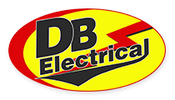If you’re a do-it-yourselfer planning your first vehicle electrical system repair, it may seem overwhelming the first time you look under the hood. For the seasoned mechanic, it’s all second nature, but it can be unfamiliar territory for the first timer. To help beginners understand the electrical system in vehicles, this guide will identify major components and describe their function in the electrical system.
Battery
This Is the one everyone thinks about when a vehicle won’t start. Batteries store electrical energy for all components and accessories needing electrical power. It’s the battery, of course, that stores electrical power to get the vehicle started, but it also helps power lights, the radio and other accessories.
Starter
The starter receives electric current from the battery to get the vehicle started. The electric current that comes from the battery to the starter must be sufficiently strong to power the system. The relatively heavy electrical current powers the starter’s motor to turn the gear wheel pinion that engages with the engine’s flywheel. To get all this done, it takes a relatively strong electrical charge.
Solenoid
Solenoids are often referred to as electromagnetic switches, which controls the flow of electric to the starter. Its job is to link the flow of electric to activate the starter, but it also must quickly terminate the flow of electric to avoid damage to the starter. Depending on the type of vehicle you are operating, you may instead have a component called a solenoid relay. Solenoids and solenoid relays are somewhat different in design, but the serve a similar purpose.
Alternator
The job of alternators is to generate electrical power that recharges the battery and powers accessories like lights, audio equipment, power windows and other components with direct current power. If the demand for power becomes too much for an alternator due to the draw from accessories, it can stress the alternator and lead to failure. For vehicles with a lot of high beam lights or powerful audio systems, a high output alternator is often recommended because it has a higher capacity for generating voltage. There is also a very close relationship between the alternator and battery. If the battery is weak, it can stress the alternator and lead to failure. While if the alternator is weak, the battery may not receive sufficient charging and die.
Voltage Regulator
This component does exactly what the name suggests. Voltage regulators control the flow of electric current to prevent surges that could cause damage. If excessive voltage is allowed to travel through the system from the alternator, it could harm the battery, wiring and electrical accessories.
Voltmeter
A voltmeter is a handy tool that measures voltage levels, helping you determine the operating condition of your vehicles electrical system. It’s great for determining declining capacity of components, allowing you to consider replacement before total failure.
Tackling Your First Vehicle Electrical System Repair
Like everything else in life, there is a learning curve to mastering vehicle electrical system repairs. Take everything step by step and you’ll acquire more knowledge as you go along. Over time, your knowledge base will grow and your confidence will build.
Related Articles
7 Tips for Getting a Motorcycle Ready for Riding
5 Important Fixes to Boost a Used Car's Sales Price
How Start-Stop Starters Benefit You and the Earth
How Solenoids Work in Starting a Vehicle


